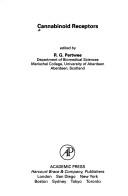| Listing 1 - 3 of 3 |
Sort by
|
Book
ISBN: 0198792603 0191787566 0191639699 9780191639692 9780191787560 132215130X 9781322151304 9780199662685 0199662681 0191639702 Year: 2014 Publisher: Oxford Oxford University Press
Abstract | Keywords | Export | Availability | Bookmark
 Loading...
Loading...Choose an application
- Reference Manager
- EndNote
- RefWorks (Direct export to RefWorks)
This book provides a multifaceted account of cannabis, a plant that is used widely both recreationally and as a medicine, as it has been over many centuries. Thus, it presents a brief account of the pharmacological history of cannabis and describes the cultivation and genotypic variability of this plant, the national and international regulation of cannabis and its many “cannabinoid” constituents, and the chemical structures and known pharmacological properties of some of these constituents, as well as their pharmacokinetics, metabolism, and forensic detection. In addition, it considers the benefits and risks to patients of taking cannabis-derived “phytocannabinoids” and synthetic cannabinoids that have already emerged as licensed medicines, describes pharmacological actions and effects that seem to underlie the approved therapeutic uses of these cannabinoids, and identifies an ever growing number of new wide-ranging potential clinical applications for phytocannabinoids. Also discussed in this book are the sought-after and adverse effects of cannabis when it is used as a recreational drug, how these adverse effects might be minimized, and the existence in certain countries of “coffee shops” or dispensaries from which cannabis can be purchased “legally” either for recreational use or for self-medication. The final chapter describes the emergence as recreational drugs of synthetic cannabinoids, considers whether these “designer drugs” are more harmful than cannabis, discusses the limitations of their current legal control, and describes their forensic detection. -- Publisher
Cannabis --- Cannabis gigantea --- Cannabis indica --- Cannabis sativa --- Gallow grass --- Cannabaceae --- Marijuana --- Therapeutic use.

ISBN: 0125514603 Year: 1995 Publisher: New York, NY : Academic Press,
Abstract | Keywords | Export | Availability | Bookmark
 Loading...
Loading...Choose an application
- Reference Manager
- EndNote
- RefWorks (Direct export to RefWorks)
Book
ISBN: 1280412437 9786610412433 3540265732 Year: 2005 Publisher: Berlin ; New York : Springer,
Abstract | Keywords | Export | Availability | Bookmark
 Loading...
Loading...Choose an application
- Reference Manager
- EndNote
- RefWorks (Direct export to RefWorks)
Less than 20 years ago the ?eld of cannabis and the cannabinoids was still c- sidered a minor, somewhat quaint, area of research. A few groups were active in the ?eld, but it was already being viewed as stagnating. The chemistry of cannabis 9 9 was well known, ? -tetrahydrocannabinol (? -THC), identi?ed in 1964, being the only major psychoactive constituent and cannabidiol, which is not psychoactive, possibly contributing to some of the effects. These cannabinoids and several s- thetic analogs had been thoroughly investigated for their pharmacological effects. Their mode of action was considered to be non-speci?c. The reasons for this - sumption were both technical and conceptual. On the technical side, it had been shown that THC was active in both enantiomeric forms (though with a different level of potency) and this observation was incompatible with action on biological substrates—a receptor, an enzyme, an ion channel—which react with a single stereoisomer only. The conceptual problem related to THC activity. This had been pointed out by several highly regarded research groups that had shown that many of the effects seen with cannabinoids were related to those of biologically active lipophiles, and that many of the effects of THC, particularly chronic ones, were comparable to those seen with anaesthetics and solvents.
Cannabis. --- Cannabinoids. --- Cannabis gigantea --- Cannabis indica --- Cannabis sativa --- Gallow grass --- Cannabaceae --- Marijuana --- Cannabis --- Hallucinogenic drugs --- Terpenes --- Toxicology. --- Neurosciences. --- Biochemistry. --- Pharmacology/Toxicology. --- Medicinal Chemistry. --- Biological chemistry --- Chemical composition of organisms --- Organisms --- Physiological chemistry --- Biology --- Chemistry --- Medical sciences --- Neural sciences --- Neurological sciences --- Neuroscience --- Nervous system --- Chemicals --- Medicine --- Pharmacology --- Poisoning --- Poisons --- Composition --- Toxicology --- Pharmacology. --- Medicinal chemistry. --- Chemistry, Medical and pharmaceutical --- Chemistry, Pharmaceutical --- Drug chemistry --- Drugs --- Medical chemistry --- Medicinal chemistry --- Pharmacochemistry --- Drug effects --- Medical pharmacology --- Chemotherapy --- Pharmacy --- Physiological effect
| Listing 1 - 3 of 3 |
Sort by
|

 Search
Search Feedback
Feedback About UniCat
About UniCat  Help
Help News
News